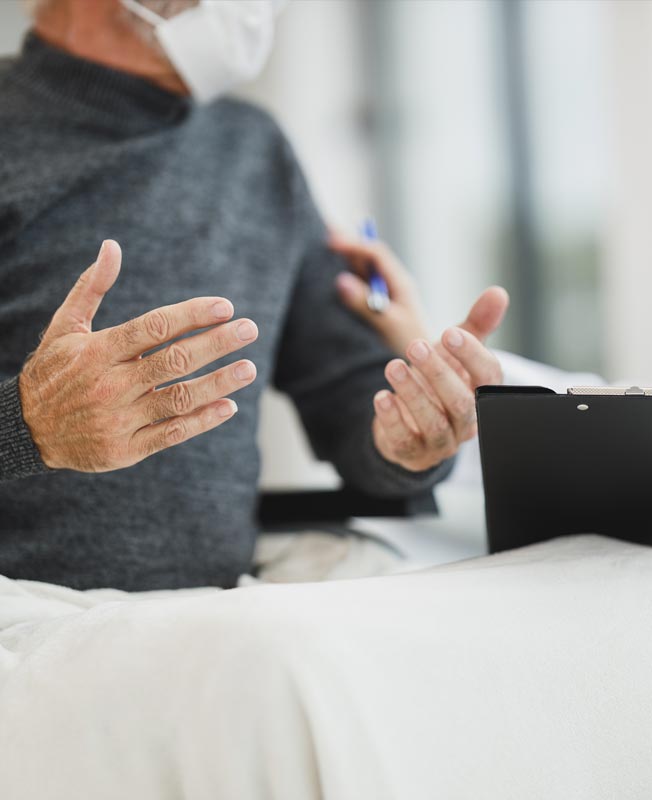Peripheral Arterial Disease

Peripheral arterial disease (PAD) is a buildup of plaque inside the arteries, which carry fresh blood and oxygen to your organs, limbs and all tissues in the body.
The plaque buildup causes the artery to narrow over time, which decreases blood flow to your limbs and tissue. If unrecognized or left untreated, this can lead to complete blockage of the arteries, resulting in painful ulcers, non-healing wounds, gangrene and eventually amputation.
Symptoms of PAD Include
- Pain, weakness, or numbness in the legs (buttocks, thighs or calves) with walking or activity. This leg pain with walking is known as claudication and typically improves when a person stops walking but will reoccur once walking is resumed.
- Claudication can also occur in the arms and may present during repetitive movements of the arm.
- As the blood flow diminishes, the pain may progress to unrelenting aching type pain in the feet or toes at night or when at rest. This pain is known as rest pain and often causes a person to hang a foot over the side of the bed to provide a bit of relief.
- Non-healing wounds or ulcerations
- Darkening of the skin
- If left untreated, rest pain will undoubtedly progress to ulceration and gangrene. Gangrene refers to dead tissue which cannot be salvaged.
Risk factors for PAD include:
- History of smoking and tobacco use
- Diabetes
- High cholesterol
- Obesity
- High blood pressure
- Family history
- People with PAD are three times more likely to die of heart attacks or strokes than those without PAD.
Peripheral arterial disease is not curable but with early treatment and lifestyle changes we can prevent amputation.
If you are experiencing any of these symptoms, please contact us for evaluation. We will schedule an office visit to evaluate your circulation with examination and ultrasound, performed by one of our experienced clinicians.
An angiogram, a procedure injecting dye into the arteries to outline the exact location of blockages, can be performed in the comfort of our office on a same day basis.
Treatment options may include:
- Balloon angioplasty (a small balloon is inflated inside the blocked or narrowed artery to open the blocked area and restore blood flow)
- Atherectomy (the plaque buildup inside the artery is “shaved” away or “cleaned out” by a small device on the end of a catheter)
- Stenting (a small coil is expanded inside the artery to open the blocked area and is left in place to provide structure, keep the artery open and maintain blood flow)
- Vascular surgery is needed in some cases. A bypass graft using a vein from another part of the body or a tube made of synthetic material is used to reroute blood flow around the blocked artery.